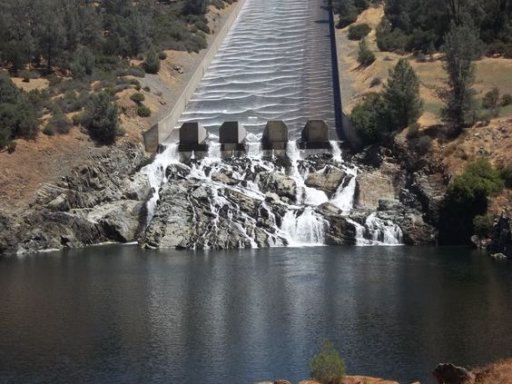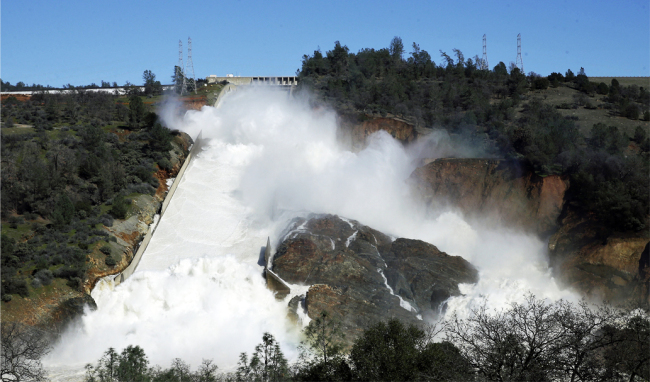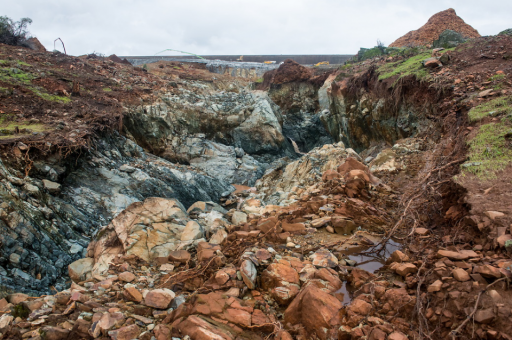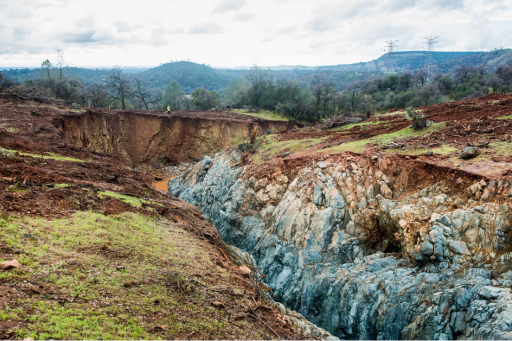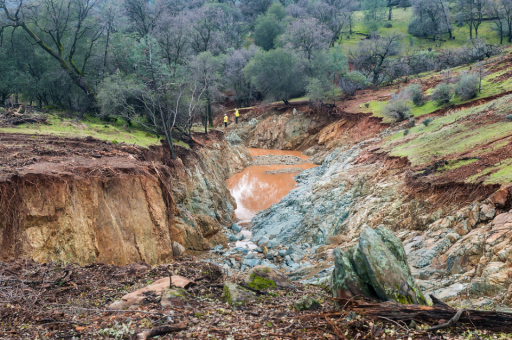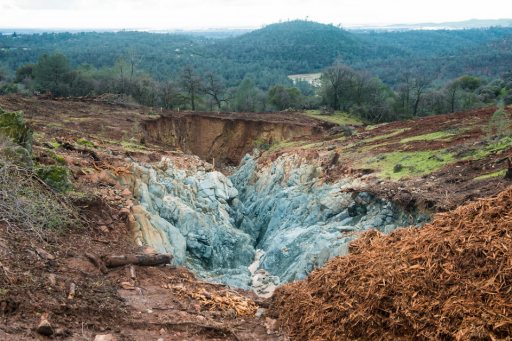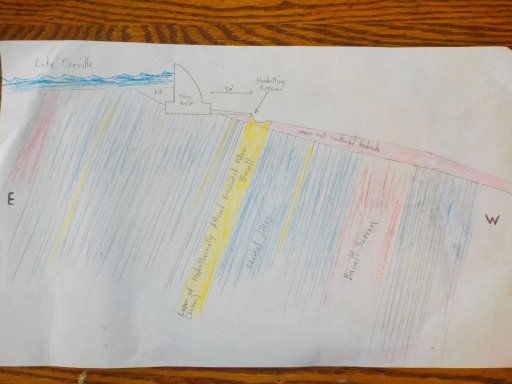


To Scott Gates --
There's a couple good reasons why the weir might not be well attached to the bedrock:
1) The dam operators had reason to believe that the weir would fail within 60 minutes of when they gave their evacuation order. This would indicate that they were observing headwater cutting from surface water or a boil that they considered unstoppable.
"Sunday at 4:42 p.m., when DWR issued this tweet: “EMERGENCY EVACUATION: Auxiliary spillway at Oroville Dam predicted to fail within the next hour. Oroville residents evacuate northward.”
http://www.sacbee.com/news/state/california/water-and-drought/article132361619.html
2) DWR officials were concerned about a boil (water flowing under the weir and coming out of the ground like a spring) coming under the weir.
"DWR officials also hope to reduce the water level by another 50 feet in order to take pressure off the emergency spillway. The level needs to be below the level of emergency spillway in case their is a boil in the weir that is allowing water to leak into the gouge."
http://www.kcra.com/article/evacuation-orders-issued-for-low-levels-of-oroville/8735215
"I understand that is not true," said Ted Thomas, chief spokesperson for the
California Department of Water Resources (DWR).
http://www.abc10.com/news/local/verify-are-there-boils-on-the-oroville-emergency-spillway/408761367


3) On the evening of the 12th there was one stream running muddy while all the others were running clear. It was the ravine immediately south of the ravine that had cut to near the big weir/parking lot weir interface. See three screenshots from various news videos (photos 2, 3, and 4).
(photos in reverse-order, not sure how to re-sequence them)
4) Obviously, there was no boil, since all erosion stopped when the water stopped coming over the weir. But, that they were worried about a boil indicates that they had limited confidence in the weir footing.
5) The bedrock has vertical weak spots, like this photo shows (pic 1), from immediately below the first section of washed out access road. This weak spot is vertically oriented, and is more than 10' deep. If the engineers in the 1960s cut 10 feet below the surface bedrock to find structural material in this location, they didn't cut deep enough. That slot in the bedrock is at least 15' deep, and appears to have rubble in the bottom.
If this slot was to propagate upstream, it could undercut the weir.
6) If the weir gets undercut, the water coming out the bottom has 60 vertical feet of hydraulic pressure on it. That's much more powerful than the surface water that etched out that weak spot in the first place, and even if the blue bedrock is holding up well to surface runoff and surface pounding, the pressure from 60 vertical feet of water would do more damage than anything that has occurred thus far. Such as etch out laterally at the base of the weir and cause a section of the weir to topple over, thus creating a 30 to 60 foot tall wall of water.
If you figure that the engineers that gave the "60 minutes until uncontrolled release" warning and evacuated 200,000 people had some inside info, then there is a basis for a weak attachment between the weir and the bedrock, and that some observations made late in the day on the 12th would have led them to conclude that weir collapse was very possible. From what I see in the screenshots, it could have been the muddy water emerging from a ravine where all other ravines were issuing clear water, or it could have been the bedrock etching plainly deeper than 10' from the bedrock surface.
I guess I'm saying that I think those engineers in the 1960s were great guys and all, but shortcuts get made sometimes that have negative results down the line.
BTW, why does the northern half of the weir have an apron on it, and the southern half not? Haven't heard anyone discuss this. Seems that the designers were more worried about surface erosion on the northern part of the weir...
Source for ravine images:
20 seconds into this 29 second video
http://www.nbcbayarea.com/news/Patc...roville-Dam-Emergency-Spillway-413830443.html
&
http://www.drroyspencer.com/2017/02...eases-emergency-spillway-repairs-in-progress/

